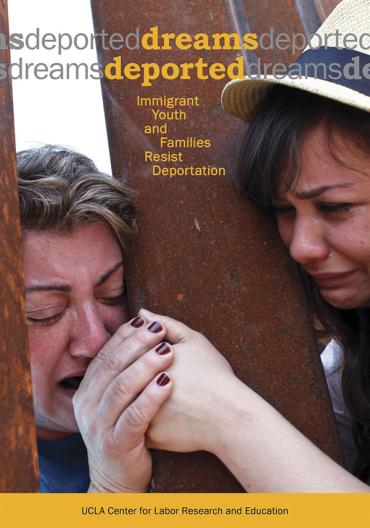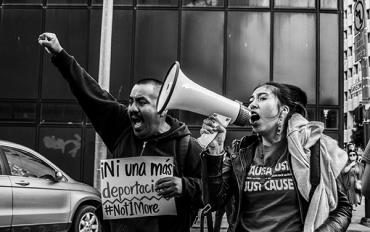It is hard not to be moved by the stories in Dreams Deported: Immigrant Youth and Families Resist Deportation. The book, the third in a series published by the UCLA Center for Labor Research and Education, is edited by Kent Wong and Nancy Guarneros and written by their students, many of whom are immigrants themselves or from immigrant families.
The book recounts the harrowing experiences of undocumented students who are trying to pursue an education and keep their families together in the United States. Divided into two parts, “stories of deportation” and “stories of resistance,” the volume tells of the pressures undocumented youth, like Adrian González, face.
In the 1980s, González and his family came to the United States on foot from Mexico. He was too young to remember their journey, which led them to Anaheim, California. Once settled, his parents found steady work. Despite the challenges he encountered because of his undocumented status—not having a Social Security number, for instance—González, after graduating from high school, enrolled at Santa Ana Community College in 2005. Thanks to California state law, which allows undocumented students to pay in-state tuition and to access state financial aid and non-state-funded scholarships for colleges and universities, González was able to pursue higher education.
In college, he joined IDEAS (Improving Dreams, Equality, Access and Success), a student-run organization that supports and advocates for undocumented youth. “IDEAS was the only student club he joined because it was for students just like him,” writes Mayra Jones, the author of the chapter about González. “He had no idea, however, how much support they would provide after his parents’ deportation.”
In 2008, Immigration and Customs Enforcement appeared at his family’s home, and his parents were soon deported. González was left to care for his two younger brothers. Fortunately, he received scholarships to continue his education, and he became an activist to fight policies like the one that tore apart his own family. Jones writes that González has since used his passion for photography to highlight “the protests, marches, hunger strikes, and civil disobedience actions organized by immigrant youth throughout Southern California.” In fact, a few of González’s compelling images are featured in Dreams Deported (and are also shown on this page).
González’s story is similar to others told in this slim (just under 100 pages) yet powerful volume, which includes answers to “Frequently Asked Questions on Immigration, Detention, and Deportation.” This section provides definitions for “undocumented” and “deportation” and also shows a graph outlining the approximate number of deportations under the last five U.S. presidents. According to the book, more than 2 million people have been deported under the Obama administration.
Dreams Deported considers President Obama’s 2012 announcement of the Deferred Action for Childhood Arrivals (DACA) program, which “provided undocumented youth with a two-year reprieve from the threat of deportation and the opportunity to apply for work permits,” a temporary victory. But it ultimately calls on the U.S. government to put politics aside and enact comprehensive immigration reform.



